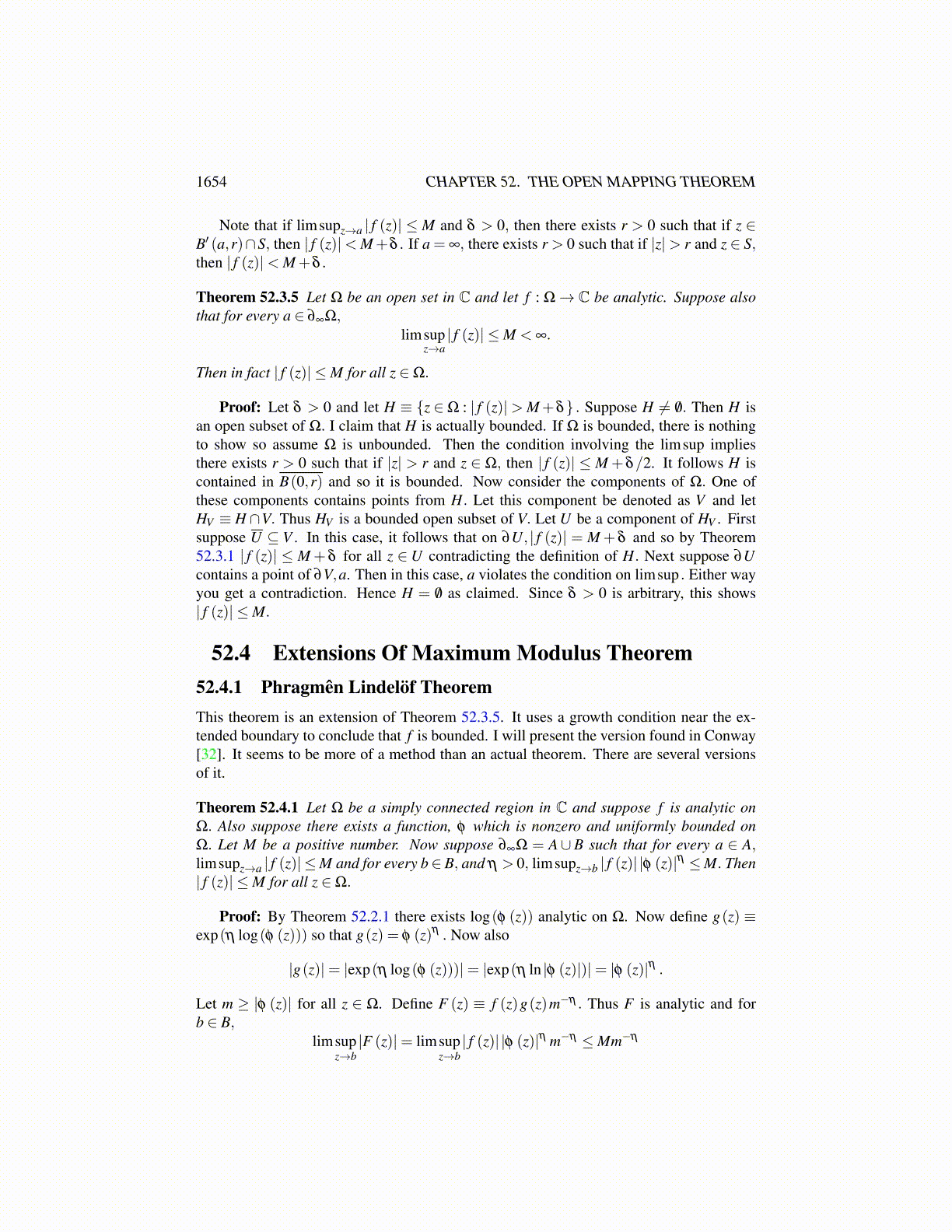
1654 CHAPTER 52. THE OPEN MAPPING THEOREM
Definition 52.2.2 Let ρ be a ray starting at 0. Thus ρ is a straight line of infinite lengthextending in one direction with its initial point at 0.
A special case of the above theorem is the following.
Theorem 52.2.3 Let ρ be a ray starting at 0. Then there exists an analytic function, L(z)defined on C\ρ such that
eL(z) = z.
This function, L is called a branch of the logarithm. This branch of the logarithm satisfiesthe usual formula for logarithms, L(zw) = L(z)+L(w) provided zw /∈ ρ .
Proof: C\ρ is a simply connected region because its complement with respect to Ĉis connected. Furthermore, the function, f (z) = z is not equal to zero on C\ρ . Therefore,by Theorem 52.2.1 there exists an analytic function L(z) such that eL(z) = f (z) = z. Nowconsider the problem of finding a description of L(z). Each z ∈ C\ρ can be written in aunique way in the form
z = |z|eiargθ (z)
where argθ (z) is the angle in (θ ,θ +2π) associated with z. (You could of course haveconsidered this to be the angle in (θ −2π,θ) associated with z or in infinitely many otheropen intervals of length 2π. The description of the log is not unique.) Then letting L(z) =a+ ib
z = |z|eiargθ (z) = eL(z) = eaeib
and so you can let L(z) = ln |z|+ iargθ (z) .Does L(z) satisfy the usual properties of the logarithm? That is, for z,w ∈ C \ ρ, is
L(zw) = L(z)+L(w)? This follows from the usual rules of exponents. You know ez+w =ezew. (You can verify this directly or you can reduce to the case where z,w are real. If z is afixed real number, then the equation holds for all real w. Therefore, it must also hold for allcomplex w because the real line contains a limit point. Now for this fixed w, the equationholds for all z real. Therefore, by similar reasoning, it holds for all complex z.)
Now suppose z,w ∈ C\ρ and zw /∈ ρ. Then
eL(zw) = zw, eL(z)+L(w) = eL(z)eL(w) = zw
and so L(zw) = L(z)+L(w) as claimed. This proves the theorem.In the case where the ray is the negative real axis, it is called the principal branch of the
logarithm. Thus arg(z) is a number between −π and π .
Definition 52.2.4 Let log denote the branch of the logarithm which corresponds to the rayfor θ = π. That is, the ray is the negative real axis. Sometimes this is called the principalbranch of the logarithm.